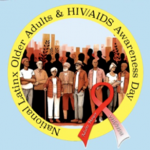HIV-positive people who are past their 40s commonly have potential conflicts between their antiretrovirals (ARVs) and other medications they are taking, aidsmap reports.
Publishing their findings in the Journal of Acquired Immune Deficiency Syndromes, researchers conducted a cross-sectional study of 744 people age 50 and older who received care for HIV in 2016 and who took ARVs as well as at least one other non-HIV medication.
The researchers analyzed the participants’ medications according to the University of Liverpool Drug Interaction Checker, which categorizes drug pairings according to a “traffic light” grading system: amber indicates that the pairing should be closely monitored or that there should be adjustments in dosing or the timing of when individuals take either of the medications; red indicates that there is a contraindication between the drugs and that they should not be taken together.
Ninety-six percent of the participants were white and 74 percent were male. The median age was 56. Eighteen percent were 65 years old or older.
The participants were on a median of two non-ARV medications. Sixty-eight percent of them were on five or more non-HIV medications, a phenomenon known as polypharmacy.
Forty-seven percent of the participants had one or more amber warnings for their medications, while 6 percent had one or more red warnings. Those age 65 and older had a higher proportion of each warning than the younger participants.
Factors associated with a higher likelihood of potential drug-drug interactions included polypharmacy and the use of blood thinners, calcium channel blockers, anti-BPH (benign prostatic hypertrophy) drugs, anti-osteoporotic drugs and sedative-hypnotic drugs. Factors linked to a lower likelihood of potential drug-drug interactions included being male and taking a non-nucleoside reverse transcriptase inhibitor or integrase inhibitor compared with taking a protease inhibitor.
To read the aidsmap article, click here.
To read the study abstract, click here.







Comments
Comments